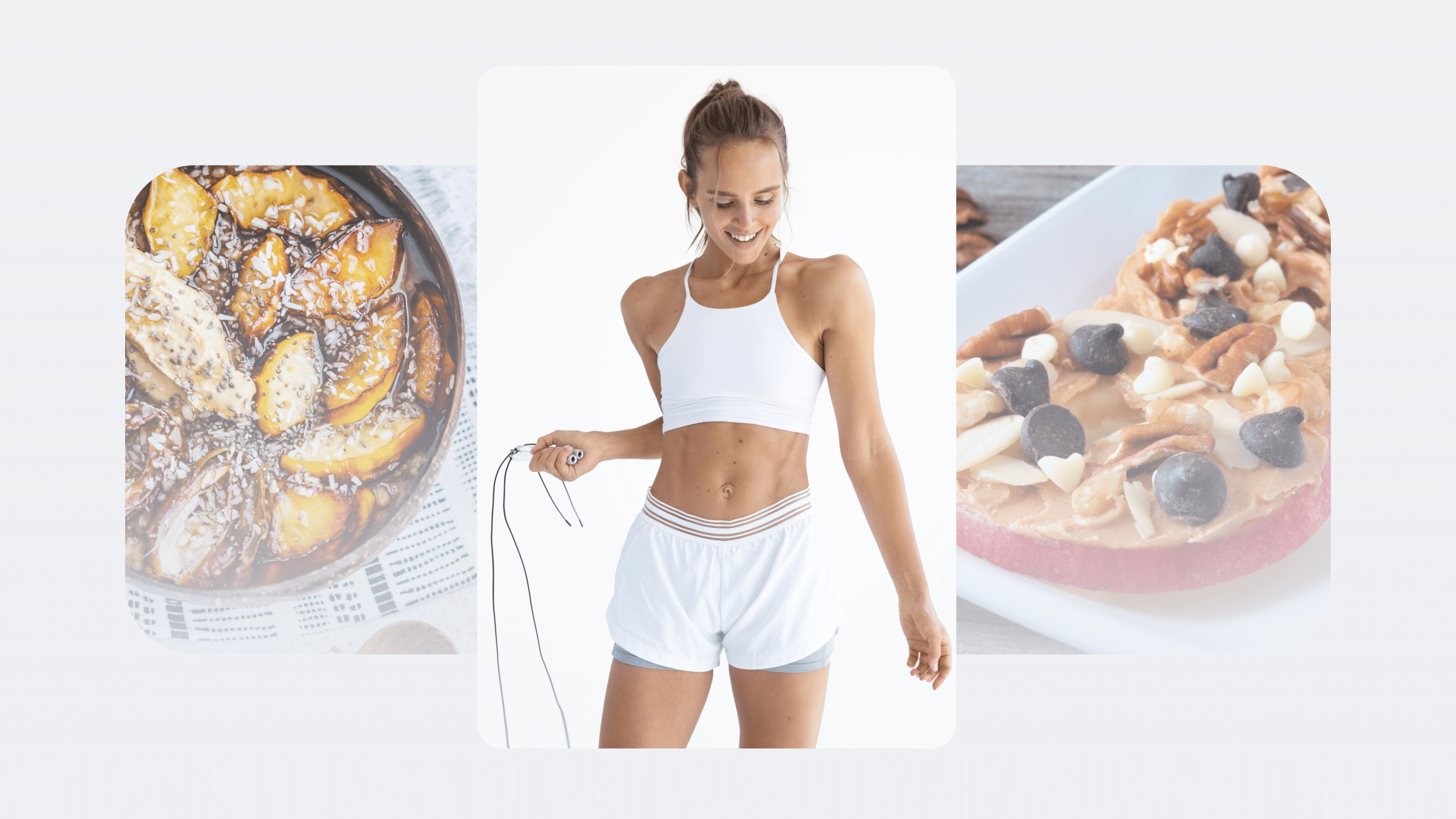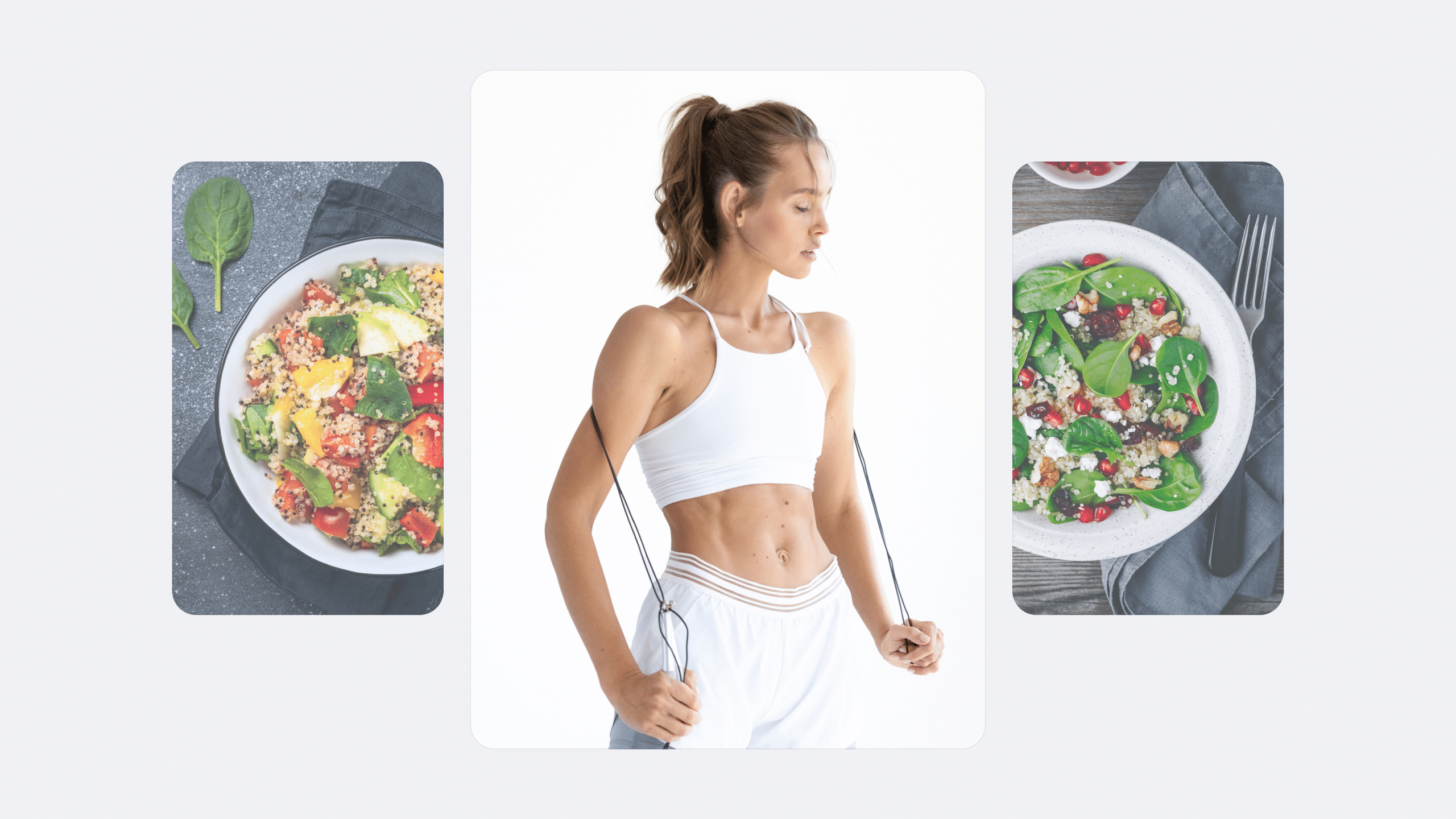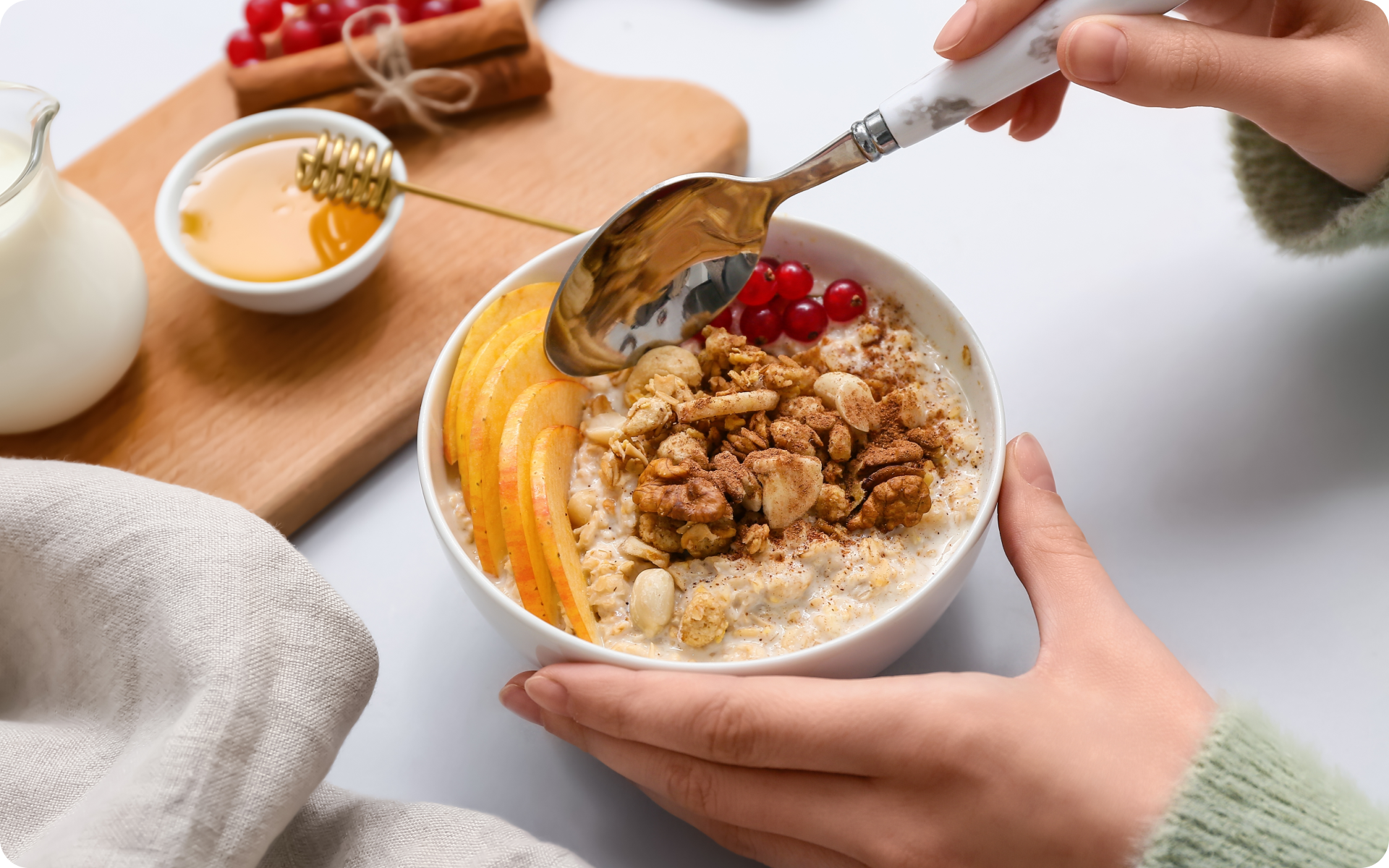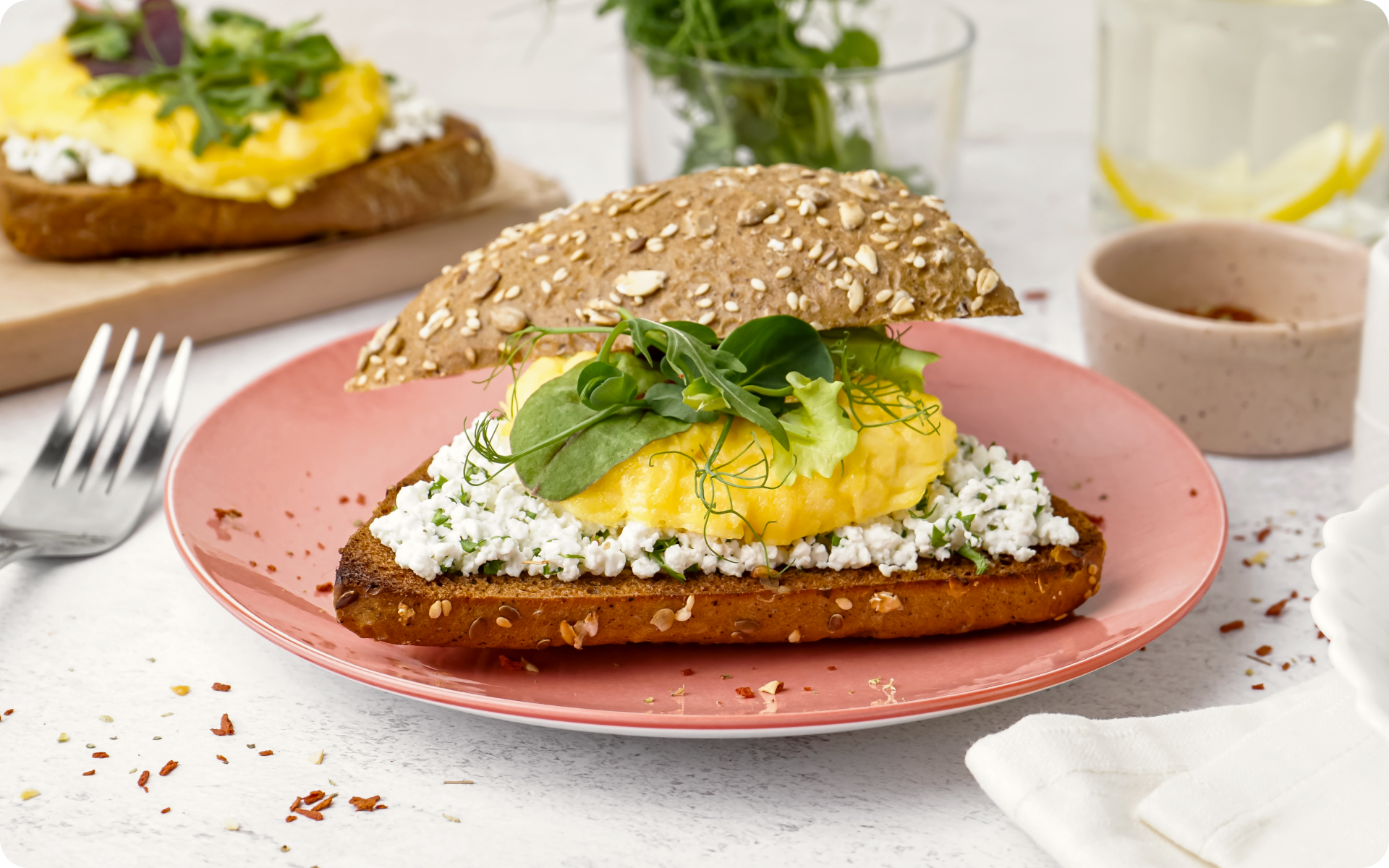Have you ever considered how many calories you need to eat each day to maintain your current weight? Unless they’re trying to lose weight or gain muscle by keeping their macros in check, many people never really track their calorie intake.
However, if you’re looking to maintain your current body composition in the long run, then checking your calorie intake may be a good idea. According to the National Institutes of Health, a 2,500-calorie diet is what the average man needs to consume per day to maintain his weight.
But what does such a diet plan look like? Does it involve copious amounts of fried chicken, burgers, french fries, and pizza, or can it be achieved through healthy options? If you are curious about what a 2,500-calorie diet every day plan looks like, read on to find out.
What Does a 2,500-Calorie Diet Look Like?
A healthy 2,500-calorie diet includes a balance of macronutrients – carbohydrates, protein, and fat – which will help you get all the micronutrients – vitamins and minerals – you need for energy and well-being.
This simply means that unhealthy, high-sugar, high-fat, deep-fried foods should not be commonplace in such a meal plan. While they can be enjoyed from time to time – after all, we’re humans and have cravings – they should be consumed on rare occasions and in moderation.
What Can I Eat For 2,500 Calories a Day?
As stated above, needing to consume 2,500 calories should not involve many unhealthy foods and should be achieved through healthy means. But what does this mean? Here are examples of foods that you should include in your diet to help you reach your desired macros and calorie intake.
Betterme will keep you laser-focused on your weight loss journey! Nutrient-packed meal plans, fat-blasting workouts, galvanizing challenges and much more. Try using the app and see for yourself!
What Should You Eat on a 2,500-Calorie Diet?
Some of the top healthy foods you should consume include (15):
1. A variety of fruits – Fruits are rich in vitamins, minerals, fiber, and plant chemicals, which boost satiety while also reducing the risk of chronic illnesses such as cancer and heart disease.
Fruits are also a great addition to a diet plan. As they’re usually quite low in calories, you can consume 2-3 servings per day without going over your allocated calorie limit (29, 14). Good examples of fruit to add to your 2,500-calorie plan for building muscle include apples, bananas, mango, pineapple, kiwi fruit, watermelon, and avocados.
2. Vegetables – Leafy greens, non-starchy vegetables, and a moderate amount of starchy vegetables are important in any healthy plan.
Leafy greens and non-starchy vegetables are lower in calories and are great for anyone who’s looking to use the 2,500-calorie meal plan for weight loss or maintenance. Vegetables also have the same health benefits as fruits and can reduce your risk of an array of illnesses (14, 25).
3. Dairy and dairy products – Unless you are lactose intolerant – or vegan – there is no need to shy away from milk or milk products.
On a 2,500-calorie meal plan for building muscle, milk can play a huge role, particularly in terms of providing you with protein. Protein is an essential building, repair, and maintenance block for muscles.
Research has shown that the consumption of milk (particularly cow’s milk) and milk supplements that contain whey and casein goes a long way to improving muscle gains (23, 7, 4).
Milk can also help you lose weight. While some might claim that milk is bad for weight loss, this isn’t necessarily true. Milk contains protein, which in addition to building and repairing muscle, helps boost satiety. The fuller you feel, the less you eat.
Research has also proven that milk will help with weight loss (4, 9). Skim milk is a good option for anyone who is still skeptical about using whole milk as part of their weight loss diet.
4. Meats, fish, and eggs – If you want to make a 2,500-calorie meal plan high-protein menu, then you must include lean meats, fatty fish, and eggs. Not only are they all fantastic protein sources with zero carbs, they’re also really good for your health.
Red meat is a source of iron, zinc, and B vitamins, especially Vitamin B12, which is important for protein metabolism, the formation of red blood cells, and nervous system maintenance (21).
Fish has been proven to have anti-oxidation, anti-inflammation, wound healing, neuroprotection, cardioprotection, and hepatoprotection properties (2). Eggs are an excellent source of essential amino acids and they improve satiety and have anticancer and immunomodulatory effects (24, 3).
5. Complex carbohydrates instead of simple carbs. Complex carbs include brown rice, barley, buckwheat, bulgur wheat, oats, and wild rice.
They are higher in fiber, so they take longer to digest, which translates to improved satiety and insulin sensitivity and helps with weight loss (1). Complex carbs are also richer in nutrients and better for your digestive system (6)
6. Legumes – They are rich fiber, protein, carbohydrates, B vitamins, iron, copper, magnesium, manganese, zinc, and phosphorus – all nutrients that help to significantly lower risks of heart disease, high blood pressure, stroke, and type 2 diabetes (20).
Legumes are also complex carbs, which are a fantastic addition to a calorie deficit diet plan for weight loss (1, 22). Great examples of legumes include beans (kidney, black, pinto, etc.) chickpeas, peanuts, and peas.
As long as you remain within your recommended calories and micro and macronutrients, you can comfortably eat any of the above foods. Make sure to keep track of your intake using a fitness app.
Read more: The Banana Diet: Pros, Cons, and Everything Else You Need to Know
Who Should Have a 2,500-Calorie Diet?
Calorie intake can be quite different among different people. This is because it is dependent on several factors such as age, amount of physical activity, height and weight, hormones, medication, and general state of health (28).
However, as a general rule, an average woman needs 2,000 calories to maintain their weight and approximately 1,500 calories to lose 1 to 2 kilograms per week. However, men need 2,500 calories to maintain their weight and 2,000 to lose weight (5).
That being said, there are some exceptions to this rule. For men who are aged between 19 and 51 who live a sedentary lifestyle, a 2,500-calorie diet can lead to weight gain. However, if the same men change up their lifestyle to become moderately active or very active, they may need to eat more and even consume 2,800 to 3,000 calories a day without weight gain (16):
When it comes to active women, their calorie intake mostly caps off at 2,200 calories a day, but incredibly active women can require up to 2,500 calories a day. Such women include bodybuilders, gym trainers, firefighters, and athletes. (10).
Can I Use the 2,500-Calorie Diet to Gain Muscle?
Yes, you can. This is commonly known as bulking – a muscle gaining phase of body building where you intentionally consume more calories than your body needs and work out more through weight training. This combination of extra calories plus weight training helps increase your muscle size and strength.
It should be noted that this only works if you normally eat less than 2,500 kcals per day. If 2,500 is your usual calorie intake baseline, then it may not work to help you bulk up and you may end up needing up to 3,000 calories to achieve your muscle gain goals (13).
Sample 2,500-Calorie Diet Meal Plan
If you’re not sure where or how to begin, this simple and healthy five-day 2,500-calorie diet meal plan can help you get started
Monday
Breakfast – 1 scoop whey protein, 20 grams blueberries, 2 whole eggs, and 5 egg whites.
Cals: 474. Fat: 15 g, Carbs: 23 g, Protein: 53.8 g
Snack – 2 small bananas and 1 scoop protein powder.
Cals: 534 Fats: 3 g, Carbs: 61 g, Protein: 46 g
Lunch – 125 g cooked brown rice, 198 g cooked chicken breast, 80 g mixed salad (vegetables of your choice).
Cals: 470. Fat: 4 g, Carbs: 30 g, Protein: 63 g
Afternoon snack– 4 boiled egg whites, 1 apple, and 2 scoops whey protein powder (mixed with water).
Cals: 476. Fat: 5 g, Carbs: 30 g, Protein: 62 g
Dinner – 198 g chicken breast, 60 g sweet potato, and 80 g mixed salad.
Cals: 393. Fat: 5 g, Carbs: 15 g, Protein: 61 g
Total intake for the day: Calories: 2,347. Fat: 32 g, Carbs: 159 g, Protein: 285.8 g
Tuesday
Breakfast – 268 g egg whites, 2 slices sprouted bread, reduced sugar jam, and sugar-free ketchup.
Cals: 319. Fat: 0 g, Carbs: 43 g, Protein: 36 g
Snack – Protein bar (68 g) and black coffee.
Cals: 270. Fat: 9 g, Carbs: 29 g, Protein: 20 g
Lunch – 74 g oats, 1 medium-sized banana, 10 g coconut flakes, and 3 pieces 70% dark chocolate.
Cals: 482. Fat: 20.9 g, Carbs: 87.6 g, Protein: 38.1 g
Snack – 1 large nectarine.
Cals: 70. Fat: 0.5 g, Carbs: 16.5 g, Protein: 1.7 g
Lunch #2 – 150 g lean ground beef, 1 cup cauliflower florets, 150 g jasmine rice, and 1 tbsp hoisin sauce.
Cals: 805. Fat: 35.5 g, Carbs: 64.8 g, Protein: 53.4 g
Dinner – 1 cup broccoli florets, 1 can tuna, and 1 medium-size sweet potato (baked).
Cals: 307. Fat: 1.4 g, Carbs: 43 g, Protein: 34.5 g
Dessert – 2 low-calorie ice cream bars.
Cals: 160. Fat: 2 g, Carbs: 28 g, Protein: 10 g
Total intake for the day: Calories: 2,413. Fat: 69.3 g, Carbs: 311.9 g, Protein: 193.7 g
BetterMe app will kick you out of the mental funk, shake off your extra weight, rid you off your energy-zapping habits, and help you sculpt the body of your dreams. Intrigued? Hurry up and change your life for the better!
Wednesday
Breakfast – 2 6-inch buttermilk pancakes, 2 eggs, 2 pats butter, 3 tbsp pure maple syrup.
Cals: 720. Fat: 32 g, Carbs: 85 g, Protein: 24 g
Snack – 1 medium banana and 1 cup oatmeal.
Cals: 286. Fat: 4 g, Carbs: 55.1 g, Protein: 7.5 g
Lunch – 1 bagel, 113 g sliced turkey, 2 slices tomato, 1 lettuce leaf, 1 slice cheddar cheese, 1 tsp mustard, 2 slices avocado.
Cals: 632. Fat: 20 g, Carbs: 70.4 g, Protein: 42.5 g
Snack – 1 container Greek yogurt, 1/2 cup raspberries, and 28 g pretzels.
Cals: 248. Fat: 4 g, Carbs: 36 g, Protein: 17 g
Dinner – 113 g chicken breast, 1 cup white rice, 1/2 chopped bell pepper, green onion, 1/2 red onion, 1/2 cup mushrooms, 2 tbsp soy sauce, 1 egg, and 1 tbsp extra-virgin olive oil.
Cals: 609. Fat: 21 g, Carbs: 55 g, Protein: 50 g
Total intake for the day: Calories: 2,495. Fat: 81 g, Carbs: 301 g, Protein: 141 g (27)
Thursday
Breakfast – 1 cup oats, 1 cup low-fat milk, 1.5 cups coffee, 1 tbsp half and half cream, 2 medium oranges, and 1 tsp sugar.
Cals: 453.6. Fat: 4.9 g, Carbs: 89.3 g, Protein: 46.2 g
Snack – 1 medium-sized banana and 3 tbsp peanut butter.
Cals: 390. Fat: 25.1 g, Carbs: 37.2 g, Protein: 13.2 g
Lunch – 1 medium-sized apple, 3 slices whole-wheat bread, 28 g cheddar cheese, 1 lettuce leaf, 1.5 cups tea, 1 tsp sugar, 57 g turkey breast, and 1 tbsp mayonnaise.
Cals: 604.5. Fat: 20.2 g, Carbs: 71.6 g, Protein: 34.7 g
Snack – 2 slices rye bread, 1 tbsp mayonnaise, 1/2 cup tuna, and 1 medium peach.
Cals: 365. Fat: 6 g, Carbs: 75 g, Protein: 40 g
Dinner – 113 g salmon, 1 cup brown rice, 2 cups skim milk, 1 large garden salad, and 4 tbsp honey mustard.
Cals: 755. Fat: 16.2 g, Carbs: 111.4 g, Protein: 47.2 g
Total intake for the day: Calories: 2,568. Fat: 72 g, Carbs: 385 g, Protein: 118.2 g
Friday
Breakfast – 1/2 cup oats, 1 cup strawberries, 1 large egg and 3 egg whites (boiled), 1.25 cups of almond milk, and 1 scoop whey protein.
Cals: 478. Fat: 13 g, Carbs: 47 g, Protein: 48 g
Snack – 227 g shredded chicken breast, 2 low-carb whole-wheat wraps, and 1 cup bell peppers.
Cals: 370. Fat: 10 g, Carbs: 31 g, Protein: 55 g
Lunch – 4 cups romaine lettuce and spinach mix, 12 grape tomatoes, 2 tbsp balsamic vinegar, 2 reduced-fat cheese sticks, 150 g Greek yogurt, and 1 cup roasted almonds.
Cals: 469. Fat: 24 g, Carbs: 29 g, Protein: 36 g
Snack – 1.25 cups unsweetened almond milk, 1 scoop whey protein, 150 g Greek yogurt, and 1 cup mixed frozen fruits.
Cals: 348. Fat: 4 g, Carbs: 38 g, Protein: 37 g
Snack – 1 scoop whey protein mixed with water.
Cals: 120. Fat: 1 g, Carbs: 3 g, Protein: 24 g
Dinner – 226 g lean ground beef, 1/2 cup brown rice, and 2 cups of steamed broccoli.
Cals: 442. Fat: 10 g, Carbs: 38 g, Protein: 56 g
Dessert: 1 cup low-fat cottage cheese and 1 cup strawberries.
Cals: 229. Fat: 5 g, Carbs: 22 g, Protein: 25 g
Total intake for the day: Calories: 2,456. Fat: 67 g, Carbs: 208 g, Protein: 281 g
Can You Do a 2,500-Calorie Keto Diet?
Yes, this is possible. Being on a ketogenic diet doesn’t mean you can’t hit the micros and macros required for the 2,500-calorie diet plan. Here’s an example of a one-day menu to give you an idea of how to eat:
Breakfast – 2 tablespoons psyllium husk, 1-2 cups coffee, 2 tablespoons heavy whipping cream, and 2-3 g EPA/DHA fish oil.
Cals: 188. Fat: 15 g, Carbs: 4 g, Protein: 0 g
Snack – 113 g ribeye steak, 3 large eggs, 3 slices pan-fried pork bacon, and 1 cup steamed spinach.
Cals: 691. Fat: 43 g, Carbs: 4 g, Protein: 63 g
Lunch – 4 pork sausage links, 1 cup sliced avocado, and 1 medium tomato.
Cals: 581. Fat: 48 g, Carbs: 5 g, Protein: 23 g
Snack – 2 oz feta cheese, 1 low-carb tortilla wrap, 1/2 cup diced cooked chicken breast, and 1 cup chopped celery.
Cals: 398. Fat: 17 g, Carbs: 9 g, Protein: 36 g
Dinner – 226 g salmon, 28 g grated parmesan cheese, 3 cups steamed cauliflower, and 1.25 tablespoons of butter.
Cals: 637. Fat: 37 g, Carbs: 6 g, Protein: 61 g
Total intake for the day: Calories: 2,495. Fat: 160 g, Carbs: 28 g, Protein: 183 g (18).
The only difference between a normal 2,500-calorie diet plan and a ketogenic meal plan is the macros. Ketogenic meal plans focus on a high fat intake, moderate protein intake, and very low carbohydrate consumption.
Macros on such an eating plan vary, but they are generally 70 to 80 % fat, 5 to 10 % carbohydrate, and 10 to 20 % protein or 55 to 60 % fat, 30 to 35 % protein, and 5 to 10 % carbohydrates (11, 17).
Read more: 6 Keto Sushi Recipes to Eat on a Low-Carb Diet
What Is a 2,500-Calorie Diet Plan for Vegetarians?
Unlike the keto diet that places such strict restrictions on macros, a 2,500-calorie diet for vegetarians places restrictions on animal-based foods and products.
Depending on what kind of vegetarian you are, you may be allowed to eat some animal products but not others. For example (26)
- Pescatarians only eat fish but avoid meat and poultry
- Lacto-vegetarians eat dairy products, including milk, cheese, yogurt, and butter, but avoid meat, fish, poultry, and eggs
- Ovo-vegetarians only eat eggs and avoid everything else
- Lacto-ovo vegetarians eat eggs and milk, but avoid meat, fish, and poultry
- Vegans, the strictest of all vegetarians, will avoid anything that comes from an animal, including honey
Can You Use a 2,500-Calorie Diet for Weight Loss?
Yes, you can, but this is entirely dependent on how many calories you previously ate per day. If your previous calorie intake was more than 2,500 kcal a day, then such an eating plan will certainly help you lose weight.
However, if you ate less than this, increasing the amount of calories to 2,500 will put you in a calorie surplus and make you gain weight, particularly if you don’t exercise enough to use up the excess.
If you aren’t sure how many calories you’re currently eating, download a reputable calorie counter app and input all your meals, snacks, and drinks over a couple of days. This will give you a good average of how many calories you eat a day.
If the number is 500 to 1,000 kcal more than 2,500, then this diet plan will be great for weight loss. However, if the number is below 2,500, you should stay away from this eating plan and cut 500 calories from the average number you got instead. This will help you start your weight loss journey.
What Are the Protein, Carbs, and Fat Grams Needed for a 2,500 Calorie Diet?
We don’t all follow the same diets and some people don’t diet at all. However, it’s always a good idea to keep in mind what you eat and how much of it you ingest.
For anyone on the 2,500-calorie diet meal plan, here are some guidelines you can use to keep track of your protein, carbs, and fat intake during the day (8):
Vegetarian diet
For anyone who is vegetarian, to achieve 2,500 calories in a day, you’ll need approximately:
- 1,300 cal of carbs = 325 g
- 450 cal of proteins = 113 g
- 800 cal of fats = 89 g
Mediterranean-style
To hit your macro and micronutrients, you’ll need to eat approximately:
- 1,375 cal of carbs = 344 g
- 350 cal of proteins = 88 g
- 850 cal of fats = 94 g
High-protein diet
The following measurements are specifically for the 40-30-30 diet plan, which means 40% of your calories come from carbohydrates, 30% from fat, and 30% from protein :
- 1,000 cal of carbs = 250 g
- 750 cal of protein = 188 g
- 750 cal of fats = 83 g
If you’re not following any specific diet, you can still follow the United States Department of Agriculture (USDA) dietary guidelines to enable you to consume the desired 2,500 calories a day. An example of this is:
- 1,275 cal of carbs = 319 g
- 450 cal of protein = 113 g
- 825 cal of fats = 92 g
FAQs
How can I eat a 2,500-calorie diet?
The key to increasing your calorie intake, particularly if you want to increase your weight or muscle mass, is to start small. Start by adding 500 calories to your daily calorie intake.
This can be done by adding healthy snacks to your diet or adding an extra half serving at lunch or dinner. If you eat a 1,700-calorie diet, adding an extra 500 will get you to 2,200, which is much closer to your goal.
After a few weeks of eating 2,200 kcal, add another 300 kcal and you’ll reach your goal. Remember to also exercise to maintain and build muscle and avoid gaining fat.
Is 2,500 calories enough to bulk?
Yes it is, but only for those who eat less than 2,500 kcal and don’t lead a particularly active lifestyle. It can also be used by women who want to lead an extremely active lifestyle.
Is it okay to eat 2,500 calories on a cheat day?
Sure, you should try to maintain a normal intake on your cheat days, but that doesn’t mean you should go overboard. You can enjoy some foods you might not incorporate on most days. However, if 2,500 is not your usual calorie intake, this larger amount of calories may leave you feeling sick with a stomach upset. Cheat days are for indulging a little, not going all out.
Will I gain weight if I eat 2,500 calories?
If your usual calorie intake is less than 2,500 kcal, yes you will. However, this can be avoided by working out more, particularly through weight lifting.
The Bottom Line
A 2,500-calorie diet is not as difficult as people may think it is.
Not only can you eat clean and healthy meals, it can also work as a good weight loss plan for certain body types. It can also be used by those who want to shed some fat for better muscle definition or who want to gain muscle.
However, it is only helpful as a weight loss solution to a small group of people. For an average person, a 2,500-calorie diet plan is a lot and will only serve to increase your weight, particularly if you don’t lead an active lifestyle. For a woman, a 2,500-calorie diet meal plan may still be too much, even if you lead an active lifestyle. Make sure you speak to a dietitian to see how much you should eat while being active to avoid fat gain.
DISCLAIMER:
This article is intended for general informational purposes only and does not serve to address individual circumstances. It is not a substitute for professional advice or help and should not be relied on for making any kind of decision-making. Any action taken as a direct or indirect result of the information in this article is entirely at your own risk and is your sole responsibility.
BetterMe, its content staff, and its medical advisors accept no responsibility for inaccuracies, errors, misstatements, inconsistencies, or omissions and specifically disclaim any liability, loss or risk, personal, professional or otherwise, which may be incurred as a consequence, directly or indirectly, of the use and/or application of any content.
You should always seek the advice of your physician or other qualified health provider with any questions you may have regarding a medical condition or your specific situation. Never disregard professional medical advice or delay seeking it because of BetterMe content. If you suspect or think you may have a medical emergency, call your doctor.
SOURCES:
- 9 Tips to Help You Lose 2 Pounds per Week (2023, livestrong.com)
- A critical review on the health benefits of fish consumption and its bioactive constituents (2022, pubmed.ncbi.nlm.nih.gov)
- Anticancer and immunomodulatory activity of egg proteins and peptides: a review (2019, ncbi.nlm.nih.gov)
- Body composition and strength changes in women with milk and resistance exercise (2010, pubmed.ncbi.nlm.nih.gov)
- Calories (2022, ncbi.nlm.nih.gov)
- Carbohydrates (2023, heart.org)
- Consumption of fluid skim milk promotes greater muscle protein accretion after resistance exercise than does consumption of an isonitrogenous and isoenergetic soy-protein beverage (2007, pubmed.ncbi.nlm.nih.gov)
- Daily Diet Composition Charts for Carbs, Protein, and Fat (2021, verywellfit.com)
- Dairy Intake Enhances Body Weight and Composition Changes during Energy Restriction in 18–50-Year-Old Adults—A Meta-Analysis of Randomized Controlled Trials (2016, ncbi.nlm.nih.gov)
- Dietary Intake and Supplement Use in Competitive Women Bodybuilders (2023, ncbi.nlm.nih.gov)
- Diet Review: Ketogenic Diet for Weight Loss (n.d., hsph.harvard.edu)
- Evidence-based recommendations for natural bodybuilding contest preparation: nutrition and supplementation (2014, pubmed.ncbi.nlm.nih.gov)
- Exactly How Many Calories Do You Need? (2017, mensjournal.com)
- Fruit and Vegetable Intake: Benefits and Progress of Nutrition Education Interventions- Narrative Review Article (2015, ncbi.nlm.nih.gov)
- Healthy Eating for a Healthy Weight (2020, cdc.gov)
- How Many Calories Do You Really Need? (2023, webmd.com)
- Ketogenic Diet (2023, ncbi.nlm.nih.gov)
- Ketogenic Meal Plans: Lose Fat, Preserve Muscle (2018, muscleandstrength.com)
- Legumes: A quick and easy switch to improve your diet (2018, health.harvard.edu)
- Legumes: Health Benefits and Culinary Approaches to Increase Intake (2015, ncbi.nlm.nih.gov)
- Meat in your diet (2021, nhs.uk)
- Scientifically Supported Methods to Lose Weight (2023, healthnews.com)
- The effects of protein and amino acid supplementation on performance and training adaptations during ten weeks of resistance training (2006, pubmed.ncbi.nlm.nih.gov)
- The Health Benefits of Egg Protein (2022, ncbi.nlm.nih.gov)
- Vegetables and Fruits (n.d., hsph.harvard.edu)
- Vegetarian diet: How to get the best nutrition (2023, mayoclinic.org)
- What Does 2,500 Calories Look Like? (2020, bodybuilding.com)
- What should my daily intake of calories be? (2019, nhs.uk)
- Why is it important to eat fruit? (2023, ask.usda.gov)











